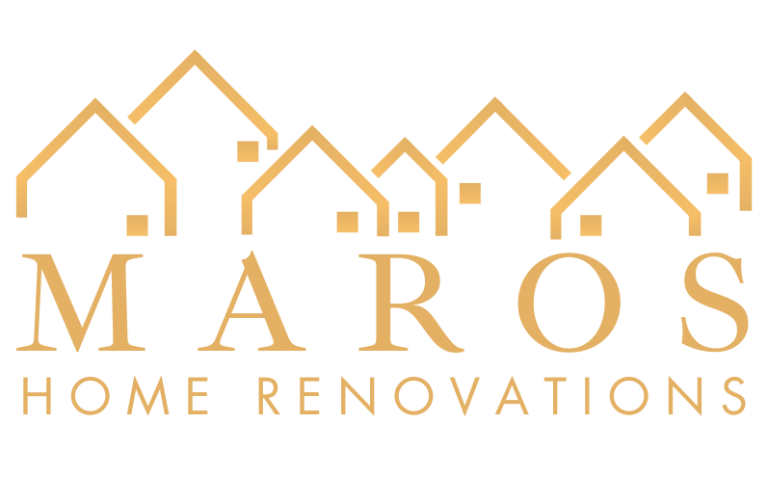Your Trusted Partner in Home Improvements
Why Waterproofing Is the Most Overlooked but Crucial Step in Bathroom Remodels

When planning a bathroom renovation, it’s easy to get swept up in the exciting details—the sleek tiles, elegant fixtures, and that luxurious rain shower you’ve always wanted. But while these elements are eye-catching, there’s one step that often goes unnoticed yet underpins everything: waterproofing.
At MAROS HOME RENOVATIONS, we understand that the beauty of a bathroom isn’t just on the surface—it’s about creating spaces that last. Overlooking or skimping on waterproofing can lead to costly repairs, mould growth, and even structural damage in the future. This vital layer protects your bathroom from inevitable splashes, spills, and steam.
What Is Bathroom Waterproofing?

Bathroom waterproofing is the process of creating a protective, water-resistant barrier to prevent water from seeping into the structural elements of your home. It involves applying specialised materials and techniques to areas prone to moisture, such as floors, walls, and shower enclosures. Proper waterproofing ensures that your bathroom remains safe, durable, and protected from water damage over time.
Why Waterproofing is Necessary for Wet Floors?

Wet floors are a common feature in bathrooms, but without proper waterproofing, they can lead to serious issues. Water can seep into the subfloor, causing structural damage, mold growth, and unpleasant odors. Waterproofing acts as a shield, protecting your home from costly repairs and maintaining a hygienic environment. It also enhances the longevity of your bathroom by preventing wear and tear caused by constant exposure to moisture.
Waterproofing is also important in other wet areas. Waterproofing in the kitchen prevents water from seeping into cabinets under the kitchen countertops or areas under the floor. Similarly, waterproofing the laundry room prevents water from seeping into the floor under the washer and dryer.
How to Waterproof the Bathroom Floor?

When waterproofing a bathroom floor or wall, it is important to follow the steps carefully to ensure that the waterproofing is done correctly.
Waterproofing a bathroom floor involves several key steps. Here’s how Maros Home Renovations approaches it:
1. Prepare the Bathroom for Insulation
We begin by thoroughly inspecting the bathroom floor to identify any cracks, uneven surfaces, or existing damage. The floor is then cleaned and prepared to ensure a smooth base for waterproofing.
2. Choose the Right Waterproofing Material
Many different materials can be used for bathroom waterproofing, including liquid waterproofing products, waterproofing membranes, and rubber or bituminous materials. We assist you in selecting the most suitable material before starting the waterproofing process.
3. Prepare the Surface with Primer
To waterproof the floor, the surface must first be prepared with a primer. We then carefully apply the waterproofing material to the floor, ensuring it covers the entire area without any gaps. We also extend the application 10–15 cm up the walls from the floor, creating a seamless barrier that prevents water from seeping in at the junctions where the floor meets the walls.
4. Sealing the Joints
The waterproofing material is carefully applied to the joints between the wall and the floor. As joints are areas where water can easily seep in, it is essential to seal them properly to ensure a watertight finish.
5. Testing
Once the waterproofing process is complete, we test the bathroom floor and walls for water retention to prevent water leakage. This test is crucial for ensuring there is no water leakage into areas beneath or near the bathroom.
To carry out the test, water is poured onto the bathroom floor and walls. The water is left in place for at least 24 hours. At the end of this time, we ensure there are no leaks. If any leakage is detected, the waterproofing material may need to be reapplied to resolve the issue.
Is Waterproofing Necessary for Bathrooms?

Absolutely! As mentioned earlier, bathrooms are wet areas that are constantly exposed to water. Without proper waterproofing, water can seep into walls, floors, and structural elements, leading to costly damage, mold growth, and even health risks.
Waterproofing might not be glamorous, but it’s the foundation of a renovation done right. So next time you’re planning a remodel, ask yourself: Is your bathroom built to stand the test of time?
Your home deserves nothing less than excellence—let us bring our expertise and personal touch to your project. Ready to take the next step? Let’s chat today!

Your Trusted Local Partner in Home Improvements
© 2025 Maros Home Renovations Ltd
We need your consent to load the translations
We use a third-party service to translate the website content that may collect data about your activity. Please review the details in the privacy policy and accept the service to view the translations.
